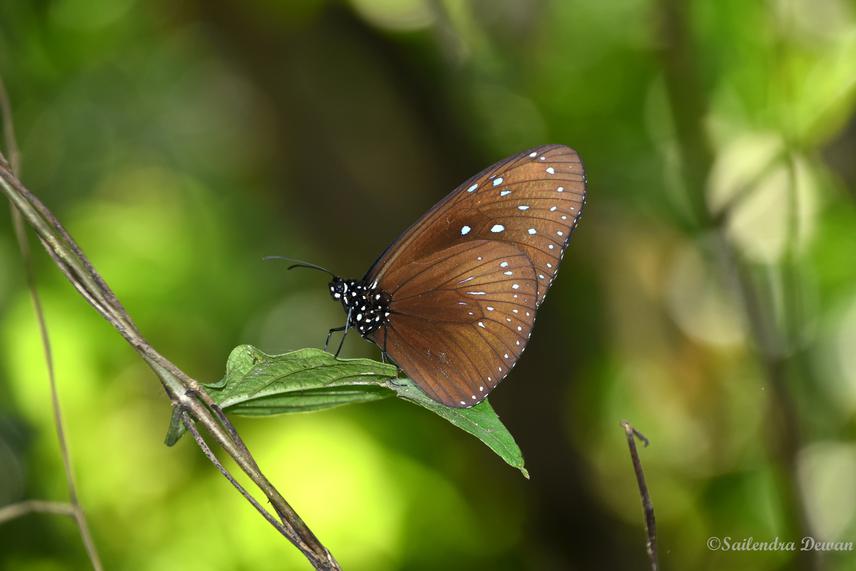Sailendra Dewan
Other projects
17 Jul 2024
Long-Term Monitoring of Butterflies in the Eastern Himalaya (LMBP-EH): a Citizen-Science Approach
To investigate the diversity patterns of butterflies along the elevation gradient and understand its causal mechanism through which we can identify conservation hotspot areas.

Striped Blue Crow (Euploea mulciber).
Sikkim a small Himalayan state of India is a globally significant biodiversity hotspot. Butterfly diversity is high with approximately 690 species recorded from the region. However, so far any studies relating to butterflies are few as compared to other higher vertebrates and their conservation status is scarcely known. Hence, this study proposes to take up systematic study and document butterflies occurrence, distribution and status along elevation gradient in Rangeet Valley of Sikkim. Since butterflies are the indicator taxa and provides important ecosystem services, their conservation is crucial. Biodiversity studies (especially involving focal taxa) along the elevation gradient and understanding their determining factors has been an important tool in conservation planning through identification of area of priority in the mountain ecosystem. The present study aims to investigate butterfly species richness, range size distribution, turnover rate and understand their causal mechanism along the elevational gradient in the Rangeet Valley in south and west Sikkim. The study also aims to generate detailed data on endemic species and threat status ascertaining conservation status of butterflies of Sikkim which is not available yet.
The project through outreach and awareness programs would provide a better knowledge of butterfly diversity and their importance to students, local communities and policymakers. The awareness of the students and local communities would be crucial milestone in promoting community conservation measures.
Fixed width circular plot count method along the transects will be followed for sampling butterflies. Depending upon the availability of suitable plots and accessibility in the sloppy terrain, transects of 600-1000 m will be established covering various elevation sites and vegetation types. Along the transects, permanent points will be marked at 50-100 m apart. Elevational distance between two consecutive sites will vary from 150-350 m depending upon the accessibility and availability of the plots in laying the transects. Climatic and vegetation data will be collected.